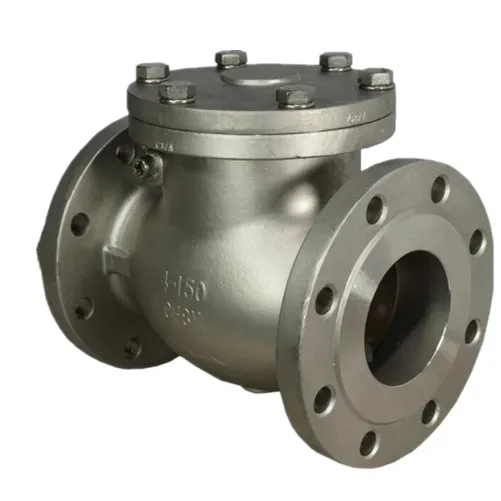Mobile:+86-311-808-126-83
Email:info@ydcastings.com
Design and Performance Analysis of Disc Turbine Impeller for Enhanced Efficiency
Exploring the Dynamics of Disc Turbine Impellers
In the realms of fluid mechanics and mechanical engineering, disc turbine impellers play a vital role in the efficient operation of various applications. From aerospace propulsion systems to hydroelectric power generation, the design and functionality of these components significantly influence performance and efficiency. This article delves into the significance, design, operation, and future perspectives of disc turbine impellers.
Introduction to Disc Turbine Impellers
Disc turbine impellers are specialized components designed to convert kinetic energy from fluid flow into mechanical energy. They are characterized by their disc shape, which features a flat or slightly curved surface that enhances the interaction between the fluid and the rotor. This design allows for improved flow dynamics and energy transfer, making them suitable for diverse applications where efficiency and performance are paramount.
Design Considerations
The design of a disc turbine impeller involves multi-faceted engineering principles, primarily focused on optimizing fluid dynamics and minimizing aerodynamic drag. The basic geometric parameters include disc diameter, blade shape, and the angle of attack. Computational Fluid Dynamics (CFD) simulations are commonly employed in the design process to predict flow patterns and identify areas of potential inefficiency.
Material selection is also critical; impellers must withstand high rotational speeds and varying pressure conditions. Advanced materials, such as titanium alloys and carbon fiber composites, are increasingly used to enhance strength while reducing weight. This allows for higher RPMs and improved efficiency, critical in applications such as turbochargers and micro-turbines.
Operational Mechanism
The operation of a disc turbine impeller is grounded in its ability to generate thrust through the conversion of fluid energy. As the impeller rotates, it accelerates the surrounding fluid, converting its pressure energy into kinetic energy. This acceleration creates a significant pressure drop behind the impeller, drawing more fluid into the system and perpetuating the cycle.
disc turbine impeller

The effectiveness of a disc turbine impeller is measured by its ability to maintain a high efficiency over various operating conditions. This involves balancing the blade design to optimize flow angles while minimizing flow separation, which can lead to turbulence and a drop in efficiency. Properly designed impellers can achieve efficiencies exceeding 90%, making them essential in high-performance applications.
Applications and Impact
Disc turbine impellers are employed in a myriad of applications. In aerospace, they are integral to turbojet and turbofan engines, where they support thrust generation and enhance engine performance. In energy production, hydroelectric and wind turbines utilize disc impellers to convert natural energy sources into electricity. Additionally, they are used in industrial processes, such as pumps and compressors, where efficient fluid handling is crucial.
The impact of these components on overall system performance cannot be overstated. In aviation, optimized impeller designs can lead to reduced fuel consumption and enhanced engine responsiveness, thereby contributing to lower emissions. Likewise, in renewable energy systems, high-efficiency impellers facilitate better energy conversion rates, promoting sustainability.
Future Trends and Innovations
The future of disc turbine impeller technology is poised for significant advancements. With the ongoing development of additive manufacturing techniques, it's possible to create complex geometries that were previously unattainable. These innovations promise to enhance performance and efficiency further, leading to more compact and lightweight designs.
Moreover, the integration of smart technologies, such as sensors and IoT (Internet of Things) capabilities, could revolutionize the monitoring and optimization of impeller performance in real time. This approach would enable predictive maintenance and improve reliability, significantly extending the lifespan of these critical components.
Conclusion
Disc turbine impellers are indispensable in various engineering applications, driving the efficiency and effectiveness of energy conversion systems. From innovative design to operational excellence, the continuous evolution of impeller technology promises exciting possibilities for the future. As industries strive for higher performance standards and sustainability, disc turbine impellers will undoubtedly remain at the forefront, shaping the way we harness and utilize energy.
-
Understanding Metal Casting TechniquesNewsApr.02,2025
-
Understanding Exhaust Manifolds for Enhanced Engine PerformanceNewsApr.02,2025
-
The World of Metal FabricationNewsApr.02,2025
-
Key Components for Pump and Turbo EfficiencyNewsApr.02,2025
-
Essential Tools for Automotive Maintenance and RepairNewsApr.02,2025
-
Durable Valve Components for Effective Water ManagementNewsApr.02,2025











